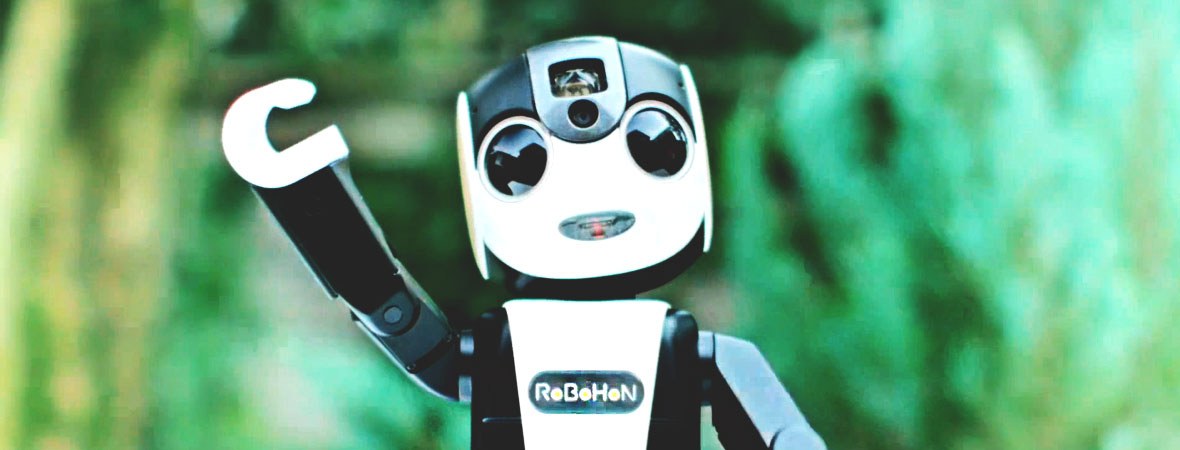
Mobile phones get smarter
Isaac Asimov, a towering figure in the world of literature and general brain power (he was at one stage during his career the vice president of Mensa International)—is the mastermind behind the I, Robot series. Robot Smartphones
If you’re not familiar with the I, Robot series, the basic premise is that in the future, all people—despite their social or economic status—have a personal helper robot in their household, a robot that fulfils all sorts of tasks: it’ll do the dishes, walk the dog, feed the cat, prepare dinner, and so on. It’s basically a robot maid.
In the series, all robots must adhere to what Asimov called the 'Three Laws of Robotics':
1. A robot may not injure a human being or, through inaction, allow a human being to come to harm.
2. A robot must obey the orders given it by human beings except where such orders would conflict with the First Law.
3. A robot must protect its own existence as long as such protection does not conflict with the First of Second Law.
Eventually, robot technology evolves to a point where the AI is so sophisticated that they (i.e., the robots) become self-aware. What follows, after a robot allegedly attacks and kills a human scientist, is a series exploring the question of how highly evolved robots will co-exist with the human race. It looks like Asimov’s dream of the future is dawning on us far quicker than he probably imagined it.
RoboHon & Robot Smartphones
Cue RoboHon, a cute little robot smartphone developed by Sharp that’s due to hit Japanese shelves in the first quarter of 2016.
Weighing in at 390g and standing at 19.5cm tall, RoboHon is the newest creation in a range of robot smartphones. It includes WiFi and LTE, and a two-inch 340 by 240 screen on its back— so despite all appearances, its primary function is still that of a smartphone's. As for features, well, there’s a camera, facial recognition, voice recognition. Nothing all too dissimilar from a regular smartphone.
What the RoboHon can do that a smartphone can’t is walk, sit down, get up, disco dance, or get your attention by raising its arms in front of you. Not to mention that it’s got an inbuilt projector, which I’ll let the video below do a better job of describing.
Although on face value there seems to be absolutely nothing practical about having a robot smartphone that’s big, heavy, and awkwardly shaped, there is something charming (and slightly creepy), about having a robot that will remember your verbal notes and remind you that you’ve run out of deodorant, while you’re frantically running down the supermarket aisle trying to find the right brand of refried beans. Having a non-human helper buddy take group photos while you’re out with friends, so no one has to be left out, is kind of cool too.
Will The Public Take To Robot Smartphones?
It’s too early to even speculate whether the RoboHon or anything like it will take a serious slice out of the smartphone market share. How consumers will react to a robot smartphone is beyond us. It’s still unknown whether Sharp will put some serious brain and cash power to make this technology the best it can be, but it does raise the interesting question of how the mobile landscape will look in five years.
Smart wearables of all sorts—watches and wristbands and glasses—have been the focal point in mobile technology and its future. But smart mobile robots that are more like a tiny, helpful friend whom you carry around with you at all times? Well, why not? I’ve sure heard crazier suggestions than that.
The development of Sharp’s RoboHon also begs another question: Will Asimov’s conjecture of the future unfold as he imagined it? What role will robots play in the human life? Are robots really going to take over the world? Well, though we are still in the infancy of this technology, most experts in the field of AI seem to think that it won’t be long before robots will reach human levels of cognition, at least in theory. What that will mean for us and how we live? Well, maybe it’s time to go out and read up on some Asimov.
Keep your eyes peeled, because as mentioned above, in early 2016 we’ll find out just how receptive the market is to a little robot friend.
